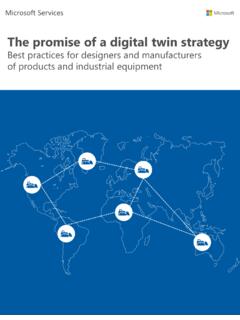Transcription of Design and Analysis of a 1MW Grid- Connected Solar PV ...
1 1 ATPS (2013): Design and Analysis of a 1MW Grid- Connected Solar PV System in Ghana. ATPS Working Paper No. 78 WORKING PAPER SERIES No. 78 Design and Analysis of a 1MW Grid- Connected Solar PV System in Ghana 2 ATPS (2013): Design and Analysis of a 1MW Grid- Connected Solar PV System in Ghana. ATPS Working Paper No. 783 ATPS (2013): Design and Analysis of a 1MW Grid- Connected Solar PV System in Ghana. ATPS Working Paper No. 78 Design and Analysis of a 1MW Grid- Connected Solar PV System in Ghana Ebenezer Nyarko KumiThe Energy CenterKwame Nkrumah University of Science and TechnologyKumasi-GhanaAbeeku Brew-HammondThe Energy CenterKwame Nkrumah University of Science and TechnologyKumasi-Ghana 4 ATPS (2013): Design and Analysis of a 1MW Grid- Connected Solar PV System in Ghana.
2 ATPS Working Paper No. 78 2013 Published by the African Technology Policy Studies NetworkISBN: 978-9966-030-56-6 This paper should be cited as:African Technology Policy Studies Network, ATPS 2013: Design and Analysis of a 1MW Grid- Connected Solar PV System in Ghana [Ebenezer Nyarko Kumi, Abeeku Brew-Hammond], ATPS WORKING PAPER No. 785 ATPS (2013): Design and Analysis of a 1MW Grid- Connected Solar PV System in Ghana. ATPS Working Paper No. 78 Table of ContentsAcknowledgement 6 Abstract 71. Introduction 82. Literature Review 103. Methodology 124. Analysis of Results 145. Conclusion and Recommendation 18 References 196 ATPS (2013): Design and Analysis of a 1MW Grid- Connected Solar PV System in Ghana.
3 ATPS Working Paper No. 78 This report was produced as part of the implementation of the African Technology Policy Studies Network (ATPS) Phase VI Strategic Plan, 2008 2012 funded by ATPS Donors including theMinisterie van Buitenlandse Zaken (DGIS) the Netherlands and the Rockefeller Foundation. The authors hereby thank the ATPS for the financial and technical support during the implementation of the program. The Authors specially thank Prof. Kevin Chika Urama, the ATPS Executive Director for his visionary leadership as Program Director; Prof. Atieno Ndede-Amadi, Program Coordinator; Dr. Nicholas Ozor, Senior Research Officer, ATPS; Mr. Ernest Nti Acheampong, ATPS Research Officer and the ATPS Team for the technical support during the research (2013): Design and Analysis of a 1MW Grid- Connected Solar PV System in Ghana.
4 ATPS Working Paper No. 78 This study aimed at developing a standard procedure for the Design of large-scale institutional grid- Connected Solar PV systems using the roofs of buildings and car parks. The standard procedure developed was validated in the Design of a 1MW grid- Connected Solar PV system for Kwame Nkrumah University of Science and Technology (KNUST), Ghana. The performance of the 1MW grid- Connected Solar PV system was also simulated over the guaranteed life of the system using RETS creen Clean Energy Project Analysis software, designed by Natural Resources Canada. The project began with a prefeasibility study of a 1MW Grid- conducted Solar PV system using RETS creen software which has a broad database of meteorological data including global daily horizontal Solar irradiance and also a database of various renewable energy systems components from different manufacturers.
5 An extensive literature review of Solar PV systems with a special focus on grid- Connected systems was conducted after which the procedure for the Design of institutional large-scale grid Connected Solar PV systems was developed. The developed procedure was used in the Design of a 1MW grid- Connected Solar PV system for KNUST-Ghana. The technical and financial performances of the 1MW grid- Connected Solar PV system were simulated using the RETS creen software. The preliminary analyses of the simulation results showed that the project is socially beneficial to the community in this case the university with an annual energy yield of about 1,159 MWh, which is about 12% of KNUST s annual electricity consumption.
6 The process of electricity generation from Solar PV saves about 792 tonnes of CO2. The yield factor, performance ratio and capacity factor were other technical performance parameters considered. Under the prevailing tariff conditions in the country, the project is not financially viable without incentives such as grants and feed-in tariffs. Abstract8 ATPS (2013): Design and Analysis of a 1MW Grid- Connected Solar PV System in Ghana. ATPS Working Paper No. 781. IntroductionThis study is being conducted with the aim of developing a standard procedure for the Design of large-scale institutional grid- Connected Solar PV (Photovoltaic) systems using the roofs of buildings and car parks. The standard procedure developed will be validated in the Design of a 1MW grid- Connected Solar PV system for KNUST (Kwame Nkrumah University of Science and Technology)-Ghana.
7 The performance of the 1MW grid- Connected Solar PV system will also be simulated over the guaranteed life of the system using Solar PV planning and simulation software packages such as PVSyst and study is necessary because Ghana has experienced a number of power crises over the last two decades, mainly due to the heavy reliance on hydroelectric power which is more often than not dependent on the rain fall pattern of the country. It has been estimated that grid electricity demand would grow from about 6,900 GWh to 18,000 GWh between 2000 and 2015 and even up to about 24,000 GWh by the year 2020 (Energy Commission, 2006). In order for Ghana to ensure secured uninterrupted electricity supply by the year 2020, the existing installed capacity of 1760MW must be doubled (Energy Commission, 2006).
8 The economy of Ghana must grow at a GDP of between 8-10% if it is to attain the status of a middle income country and these growth rates require significant amount of electricity (Brew-Hammond et al., 2007). The government of Ghana has targeted 10% of the country s electricity generation from renewable energy and this will come mainly from Solar , small and medium sized hydros, wind, biomass and municipal solid wastes (Energy Commission, 2006). A look at the world map of mean Solar radiations reveal that, Africa as a continent receives the highest amounts of Solar radiation between 300 and 350 W/m2 annually (Brew-Hammond et al., 2008). This makes the African continent of which Ghana is a part, exceptionally suitable for Solar energy projects.
9 In spite of this huge potential, Africa still trails the rest of the world in terms of Solar energy applications and energy services in general; thus referred globally as the Dark Continent in general; thus referred globally as the Dark Solar Photovoltaic (PV) systems employ the direct conversion of sunlight into electricity which is fed directly into the electricity grid without storage in batteries. This will be a very good way to boost the existing electricity production capacity in the country, which is mainly from hydro and thermal sources. This will contribute positively to the worsening energy situation in the country. Solar energy, being a renewable source, will also provide energy without pollutants and greenhouse gas emissions.
10 This can go a long way to help mitigate the adverse effect of global warming as well as contribute to sustainable energy development. It will also set the pace for similar projects to be developed in other institutions thereby helping attain the target of 10% renewable energy in the electricity generation mix set by the main objective of the project is to Design a 1MW grid- Connected Solar photovoltaic system for KNUST-Ghana using the roofs of buildings and car parks and to analyze the technical and financial performances based on the results of simulation software specific objectives are as follows: To develop a standard procedure for the development of institutional large scale grid- Connected Solar PV systems.







